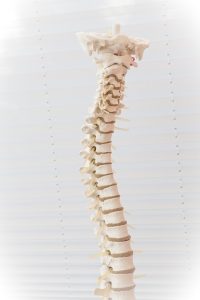What Exactly Does the Spine Do for Us?
 The spine plays a number of very important roles in maintaining proper posture, movement, and overall day-to-day health. And, as many people know, without good spine function, moving around can become painfully difficult.
The spine plays a number of very important roles in maintaining proper posture, movement, and overall day-to-day health. And, as many people know, without good spine function, moving around can become painfully difficult.
The spine, also known as the vertebral column, is made up of a series of bones called vertebrae, which are stacked on top of one another and separated by small discs called intervertebral discs. The vertebrae are held together by a series of ligaments and muscles, which help to provide stability and support for the spine.
Overall, the spine is responsible for supporting the body’s weight and for allowing the body to bend and twist. It also protects the spinal cord, a bundle of nerves that runs through the center of the spine and carries signals to and from the brain. The spinal cord is protected by the bones of the vertebrae and by a series of membranes called meninges.
The Sum of Its Parts
There are three main regions of the spine: the cervical spine, the thoracic spine, and the lumbar spine. The cervical spine is located in the neck and consists of seven vertebrae. It is responsible for supporting the head and allowing the head to turn and tilt. The thoracic spine is located in the upper back and consists of 12 vertebrae. It’s responsible for supporting the body’s upper weight and for allowing the body to bend and twist. The lumbar spine is located in the lower back and consists of five vertebrae. It is responsible for supporting the body’s lower weight and for allowing the body to bend and twist.
Relationship to the Nervous System
In addition to its structural and support functions, the spine also plays an important role in the body’s nervous system. The spinal cord carries signals to and from the brain and controls many of the body’s functions, including movement, sensation, and reflexes.
Calcium
Along with providing us with support, flexibility, and protection, the spine bones (vertebrae) store much of the body’s calcium. The marrow within the spine bones is also a major producer of blood cells for the body that are important for circulating oxygen and fighting infection.
In a Nutshell
The main functions of the spine are to:
- Protect the spinal cord, nerve roots, and many of our internal organs.
- Give structural support so we can maintain an upright posture and allow for flexible motion.
It’s often the case that we don’t pay much attention to the health of our spines until something goes wrong. But taking care of this central part of our body should be a priority even when we’re not experiencing any issues.
